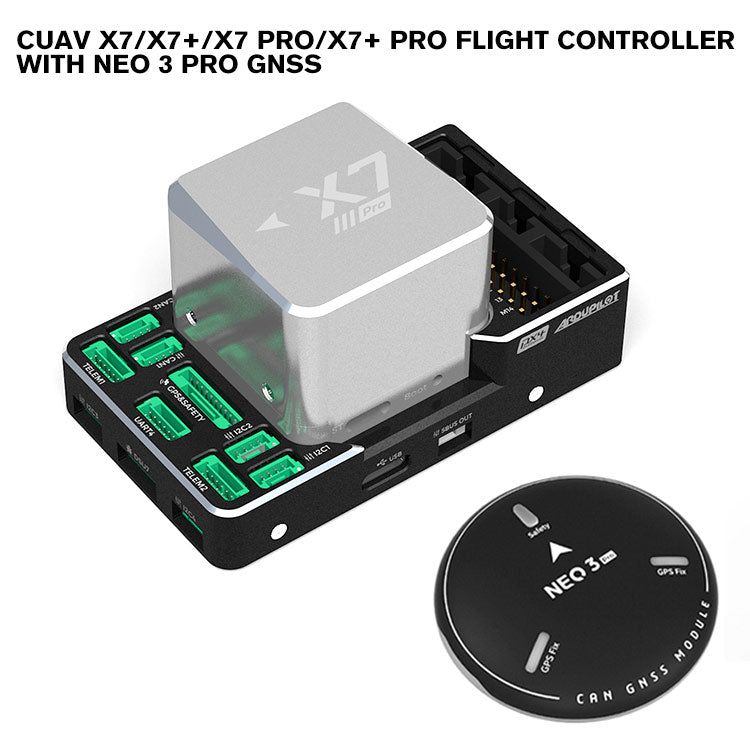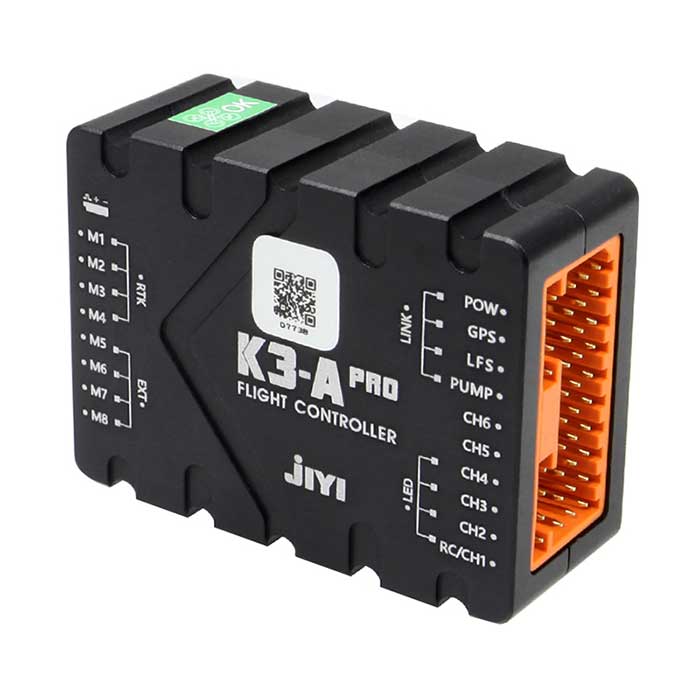SparkNavi Drone Flight Controller and GNSS/INS Made in Taiwan: Technology for Specialist UAVs
SparkNavi Drone Flight Controller and GNSS/INS Made in Taiwan: Technology for Specialist UAVs
Blog Article
The Importance of Drone Flight Controllers in Modern Aerial Technology: Key Parts and Their Effect
In the realm of modern aerial modern technology, drone flight controllers offer as the crucial systems that orchestrate a drone's performance and capacities. As sectors significantly rely on drones for applications varying from agriculture to surveillance, the evolving innovation within flight controllers elevates essential questions concerning their future effect and prospective improvements.

Introduction of Drone Trip Controllers
In the world of airborne innovation, drone flight controllers offer as the crucial mind of unmanned aerial cars (UAVs), making it possible for specific ability to move and security during flight. These advanced systems incorporate sensing unit data, processing formulas, and control inputs, enabling drones to implement intricate trip patterns with accuracy.
Drone trip controllers use numerous sensors, such as gyroscopes, accelerometers, and GPS components, to examine the UAV's alignment and position in real-time. This information is crucial for maintaining balance and making certain secure procedure in diverse environmental conditions. The controllers process this information to make immediate adjustments to the drone's motors, permitting for smooth transitions and receptive handling.
Moreover, trip controllers are equipped with sophisticated software application that sustains functions such as waypoint navigation, challenge avoidance, and independent flight capacities. This software program is important for both recreational and business applications, where dependability and precision are critical. As drone technology remains to advancement, the evolution of trip controllers will play a crucial role in boosting UAV performance, security, and adaptability, inevitably expanding their applications throughout numerous industries.
Trick Components Explained
Comprehending the fundamental components of drone flight controllers is crucial for understanding how these systems run properly. At the heart of a flight controller is the microcontroller, which functions as the mind, refining data from various sensors and performing commands. Essential sensors consist of gyroscopes and accelerometers, which measure the drone's orientation and movement, giving essential comments for stablizing.
One more key element is the barometer, which assesses elevation by determining air pressure, while GPS modules supply positional information, allowing independent navigating - SparkNavi drone flight controller and GNSS/INS made in taiwan. The flight controller likewise interfaces with Electronic Speed Controllers (ESCs), which manage the rate of the drone's electric motors based upon the controller's commands
Communication components, such as radio receivers, help with remote input, allowing drivers to send commands in real-time. In addition, some flight controllers incorporate software that can take care of complicated algorithms for waypoint navigating, flight preparation, and telemetry data analysis.
Role in Flight Security
Central to preserving flight security, drone trip controllers use advanced algorithms to refine sensor data and make real-time changes. These controllers are furnished with an array of sensing units, consisting of measures, gyroscopes, and accelerometers, which constantly check the drone's positioning, altitude, and rate. By analyzing this data, the flight controller can identify variances from the wanted trip course and react promptly to keep security.
For instance, if a drone experiences an unanticipated gust of wind, the flight controller can quickly readjust the electric motor rates to combat the disturbance, ensuring a steady trip trajectory. This capability is vital not just for hand-operated flight operations but additionally for implementing complicated maneuvers and preserving smooth trip in different ecological conditions.
.png)
Moreover, the advanced algorithms used in flight controllers, such as PID (Proportional-Integral-Derivative) control, enable fine-tuning of the drone's action to adjustments in flight conditions. By maximizing these control this post parameters, flight controllers can enhance stability, improve responsiveness, and decrease pilot workload. Eventually, the function of flight controllers in making certain trip stability is important for the secure and effective operation of modern-day drones throughout varied applications.
Effect On Autonomous Procedures

Autonomous procedures are particularly essential in varied applications such as security, agriculture, and shipment services. With enhanced trip controllers, drones can autonomously browse established routes, efficiently collect data, and adjust to dynamic atmospheres. This ability decreases the demand for constant human oversight, thus boosting functional effectiveness and safety.
Moreover, the application of artificial intelligence strategies within flight controllers allows drones to enhance their efficiency gradually by picking up from previous missions. This adaptability leads the way for extra innovative self-governing applications, such as flock technology, where multiple drones coordinate their activities to accomplish an usual purpose.
Future Trends in Trip Controllers
Advancements in flight controller innovation are positioned to revolutionize drone capacities in the coming years. One substantial trend is the assimilation Extra resources of artificial knowledge (AI) and artificial intelligence algorithms, enabling drones to find out from their environments and make real-time choices. This innovation will boost independent navigating, obstacle avoidance, and goal planning, significantly improving operational performance and safety and security.
In addition, the growth of sophisticated sensor technologies, such as LiDAR and multispectral imaging, will certainly supply trip controllers with richer information inputs. This will certainly help with extra innovative logical capacities, permitting drones to conduct complex jobs, such as accuracy search, agriculture and rescue, and infrastructure inspections with unmatched accuracy.
Another arising fad is the miniaturization of flight controller parts, which will certainly lead to lighter and a lot more small drones. This evolution will certainly expand flight durations and haul capabilities, making drones extra functional for various applications.
Final Thought
In verdict, drone flight controllers work as vital components in modern-day aerial technology, guaranteeing security and precision in ability to move through the integration of microcontrollers, accelerometers, and GPS components. SparkNavi drone flight controller and GNSS/INS made in discover here taiwan. Their ability to allow self-governing procedures and adjust to various applications underscores their significance across several sectors. As developments in fabricated intelligence and sensor innovation remain to arise, the potential for boosted abilities and improved operational performance in drone systems will likely improve the future of airborne applications
Central to preserving flight security, drone flight controllers make use of innovative formulas to process sensing unit data and make real-time modifications. By translating this data, the flight controller can determine discrepancies from the preferred flight path and respond immediately to keep stability.
In addition, the sophisticated algorithms used in flight controllers, such as PID (Proportional-Integral-Derivative) control, permit for fine-tuning of the drone's feedback to adjustments in trip conditions. Ultimately, the role of flight controllers in making certain trip stability is essential for the risk-free and effective operation of contemporary drones across varied applications.
The innovations in drone trip controllers not just enhance flight stability but additionally dramatically affect autonomous operations. SparkNavi drone flight controller and GNSS/INS made in taiwan.
Report this page